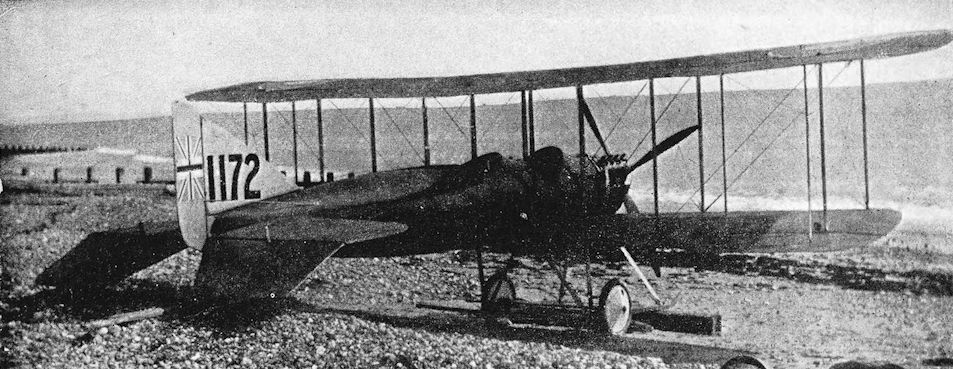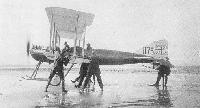
Описание
Страна: Великобритания
Год: 1915
J.Bruce British Aeroplanes 1914-1918 (Putnam)
White and Thompson “Bognor Bloater”
SHORTLY after the outbreak of war, F. P. H. Beadle joined the White and Thompson company as chief designer. His first design for his new firm was a two-seat tractor biplane landplane which was remarkable for a fine wooden monocoque fuselage. The type appeared in 1915, and it has been claimed that it was the first aircraft in the world with a monocoque fuselage to go into production.
There may be justification for this claim, for a small batch was ordered by the Admiralty. When the machines were delivered to the R.N.A.S. they were nicknamed “Bognor Bloaters”, a name which coupled their place of origin to the allegedly scaly appearance of the fuselage with its copper stitching against the cedar planking.
The fuselage was a boat-built structure, in which diagonal planking of Saunders “Consuta” plywood was applied to formers and stringers. Great care was taken to ensure a good finish: the copper stitching was made flush with the surface, and the completed fuselage was varnished. The fuselages were built by Williams of Littlehampton. A 70 h.p. Renault engine was mounted in the nose, and had exhaust manifolds which ran downwards to exhaust under the lower wing.
It seems a pity that these fine fuselages were fitted with such unprepossessing flight organs. The two-bay wings were of unequal span, and were fitted with ailerons which projected behind the trailing edges of the mainplanes. Instead of conventional centre-section struts there were full-length interplane struts hard against the fuselage.
The tail surfaces were of simple design, and the undercarriage was a twin-skid affair reminiscent of that of the B.E.2. The undercarriage could be fitted with a claw brake which could be released on landing to drag in the ground and bring the aircraft to a standstill.
The test-flying of the Bognor Bloater was performed by E. G. Gordon England, and the first machine was flying in March, 1915. The type was also flown by Clifford Prodger, who had a good opinion of it, and it is recorded that he looped one of the Bloaters.
The Service function of this unwarlike aeroplane remains obscure, but there can be little doubt that it would have been used for training purposes.
SPECIFICATION
Manufacturers: White & Thompson, Ltd., Bognor Regis, Sussex.
Power: 70 h.p. Renault.
Service Use: R.N.A.S. Stations at Eastbourne, Great Yarmouth and Killingholme.
Production: Twelve were ordered and at least ten were built.
Serial Numbers: 1171-1182.
Описание:
- J.Bruce British Aeroplanes 1914-1918 (Putnam)
- M.Goodall, A.Tagg British Aircraft before the Great War (Schiffer)
- O.Thetford British Naval Aircraft since 1912 (Putnam)
Фотографии
-
J.Bruce - British Aeroplanes 1914-1918 /Putnam/
White & Thompson “Bognor Bloater”.
-
M.Goodall, A.Tagg - British Aircraft before the Great War /Schiffer/
W&T biplane NT3, nicknamed 'Bognor Bloater', was a BE2c derivative used by the RNAS.


